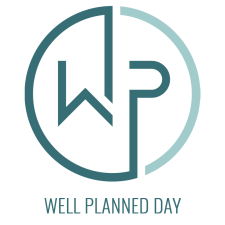Beyond ESA Marketplaces:
The Next Era of Homeschool Commerce
Why Owning Relationships Matters More Than Owning a Spot on a Marketplace
The Frustration of ESA Marketplaces
Every time I meet with a client and the topic of ESAs comes up, I see the same reaction: a look of exasperation. Some have given up entirely. Others are spending money hiring researchers just to help them figure out how to get listed. Many are waiting it out, stuck at the mercy of a process that moves at its own pace.
And even when they do get listed, frustration only grows. Awareness of the funds is still minimal. ESAs don’t market to homeschoolers, and in fairness, how could they? We’ve talked before about how difficult it is to reach this community. But the result is the same: families often don’t even know they have resources waiting for them, while vendors watch potential customers slip by.
On top of that, the marketplaces themselves are shockingly unsophisticated. Vendors are hiring staff who spend hours every single day manually moving data back and forth because there are no API integrations into ecommerce systems. No way to sync product catalogs automatically. No automation for distinguishing digital orders from physical shipments. No shipping integrations. In many cases, a vendor can’t even see what their own storefront looks like. It’s Amazon-level in size, but without Amazon’s ability to search, sort, or discover.
And the worst part? These marketplaces strip away the very thing vendors need most: visibility into their customers. You can’t drive traffic, you can’t market to families directly, you can’t even know if an order came because of your advertising or because someone happened to stumble across your product. It’s like renting a booth at a crowded trade show, only to realize you can’t hang a sign, talk to customers directly, or even see who stopped by.
I’ve weighed each of these issues and, where I could, I found workarounds. I know how to market, but I can’t determine ROI inside these walled gardens. I even wrote custom programs to process orders automatically in lieu of proper APIs. I’m a jack of all trades, and truthfully, these difficulties excite me to solve. But I also recognize that most vendors don’t have the time, resources, or drive to hack their way through. For them, it isn’t a priority. They’re waiting for the marketplace to improve — and it never does.
That’s the problem we’re setting out to solve. WPA isn’t just picking up the ball; we’re taking it further than any marketplace has gone before — layering in automation, API integrations, and a level of personalization powered by AI and neurometrics that no state-run system could ever achieve.
And importantly, this isn’t a someday vision. The groundwork is already being laid. WPA is piloting attribution systems, testing campaigns, refining neurometric messaging, and building the infrastructure that will power the 2026 marketplace and 2027 direct SGO access. That means every vendor who works with us now isn’t just finding short-term relief — they’re securing their position as leaders in the next era of homeschool commerce.
Exclusive Client Access
I hope you’ve enjoyed this glimpse into how the ESA marketplace era is evolving — and why owning relationships will define the next wave of homeschool commerce. In the full article, we unpack the roadmap for vendors: how to reclaim visibility, build attribution systems that actually measure ROI, and prepare now for the AI-driven WPA Marketplace launching in 2026.
Our Marketing Insights Division is home to a growing library of in-depth research, strategy frameworks, and case studies built from over two decades of homeschool industry expertise.
These resources are reserved for active Well Planned Advertiser clients, providing exclusive access to:
- Deep market intelligence on the values, history, and mindset shaping homeschool families
- Proven strategies for reaching parents across digital, print, and community channels
- Insights on shifting education trends, funding models, and emerging marketing technologies
- Forward-looking analysis to help brands anticipate change and position for long-term growth
If you’re not yet a client, you can still preview a portion of each article below — or book a strategy call to learn more about partnership access.
About the Author
Rebecca Scarlata Farris
With 35 years in homeschooling — as a student, mom of five, and entrepreneur — Rebecca has spent her career helping families thrive. She created the first Well Planned Day planners, launched Family magazine, and pioneered digital conventions that reshaped how homeschoolers connect.
Today, as founder of Well Planned Advertiser, she combines deep community insight with technology to help homeschool businesses reach families with precision.






